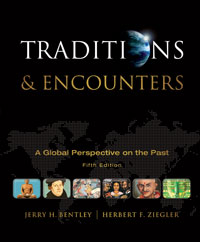1 A) before the emergence of cities. B) before modern humans were born. C) before the invention of writing. D) before Homo sapiens appeared. E) None of these answers is correct. 2 A) genetic makeup. B) body chemistry. C) level of intelligence. D) the structure of the brain. E) None of these answers is correct. 3 A) a female ape. B) an Australopithecus . C) a Homo erectus . D) an archeologist. E) None of these answers is correct. 4 A) apes and monkeys. B) Australopithecus and Homo erectus .C) Homo sapiens and Homo erectus .D) Homo neandertalensis and Homo sapiens .E) modern humans. 5 Homo erectus and Australopithecus was the ability toA) walk upright on two legs. B) domesticate animals. C) communicate complex ideas. D) make stone tools. E) All these answers are correct. 6 Homo sapiens were better hunters than Australopithecus and Homo erectus because theyA) organized larger hunting bands than their ancestors did. B) were smaller in body size but swifter in action. C) had larger brains and higher intelligence. D) had more animals to hunt. E) All these answers are correct. 7 A) human beings used stone and bone tools in their cultivation of crops. B) the peoples relied on hunting and gathering for subsistence. C) men and women engaged in the same economic activities. D) people domesticated animals. E) None of these answers is correct. 8 A) They show that some paleolithic cultures settled permanently. B) They show that some paleolithic peoples lived in much larger groups. C) They show that some paleolithic cultures had specialization of labor. D) They show that some paleolithic cultures had hierarchies of authority. E) All these answers are correct. 9 A) elaborate burials. B) cave paintings. C) ancestor worship. D) Venus figurines. E) All these answers are correct. 10 A) creating complex languages. B) inventing the bow and arrow. C) using barbed harpoons. D) learning to fish in deep water. E) All these answers are correct. 11 Homo sapiens A) worshipped the goddess of love forty thousand years ago. B) had a deep interest in love-making activities. C) were strongly concerned with fertility and the generation of new life. D) used sympathetic magic to succeed in hunting. E) All these answers are correct. 12 A) to warn competing groups of people of their presence B) to practice telepathy C) to draw portraits of each other D) to exercise sympathetic magic E) None of these answers is correct. 13 A) the early stages of agricultural society. B) the agricultural transition. C) the era in which the peoples began to use polished stone tools. D) the era in which people began to live permanently in villages. E) All these answers are correct. 14 A) cultivation required much less work than hunting and gathering. B) cultivation provided a relatively stable and regular supply of food. C) human beings had mastered agricultural knowledge and technique. D) agriculture led to a more varied diet. E) None of these answers is correct. 15 A) population growth. B) the emergence of villages and towns. C) the invention of writing. D) the specialization of labor. E) the emergence of social classes. 16 A) agricultural sites. B) towns. C) cities. D) villages. E) temples. 17 A) stone tool making, leather, and jewelry. B) wood carving, beads, and baskets. C) pottery, metallurgy, and textiles. D) furs, fish, and grain. E) None of these answers is correct. 18 A) specialization of labor. B) iron production. C) long-distance trade. D) writing. E) All these answers are correct. 19 A) religious texts. B) representations of gods and goddesses. C) cave paintings. D) fossils. E) priests’ burial sites. 20 A) the valleys of the Tigris and Euphrates rivers. B) Egypt. C) China. D) India. E) South America.





